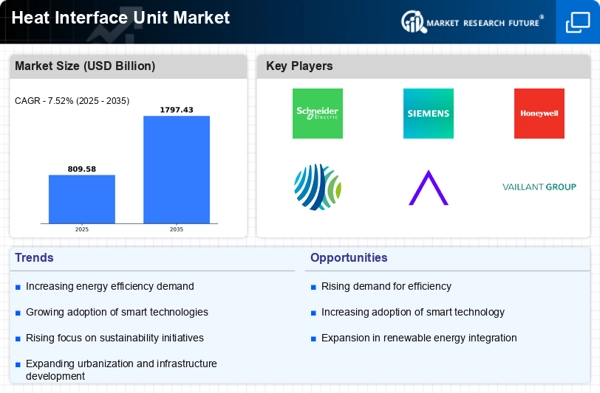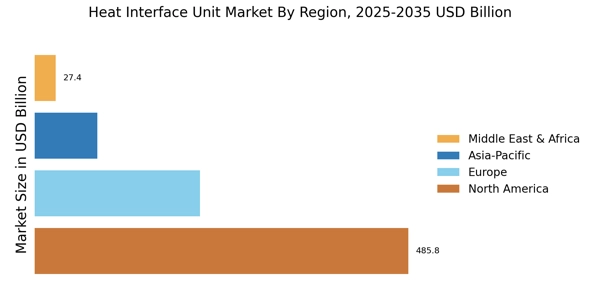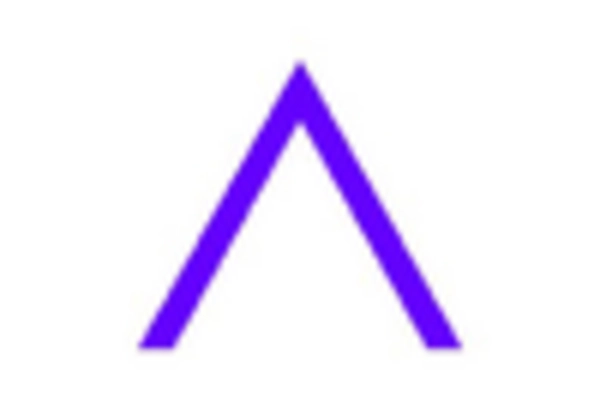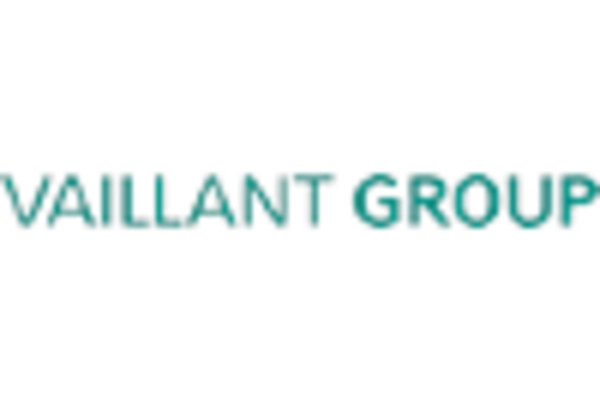Rising Demand for Energy Efficiency
The Heat Interface Unit Market is experiencing a notable increase in demand for energy-efficient solutions. As energy costs continue to rise, consumers and businesses alike are seeking technologies that can reduce energy consumption. Heat interface units, which facilitate efficient heat transfer in heating systems, are becoming increasingly popular. According to recent data, the energy efficiency market is projected to grow at a compound annual growth rate of approximately 8% over the next five years. This trend indicates a strong preference for systems that not only lower operational costs but also contribute to environmental sustainability. Consequently, manufacturers in the Heat Interface Unit Market are focusing on developing advanced units that optimize energy use, thereby aligning with consumer expectations and regulatory requirements.
Government Regulations and Incentives
Government regulations aimed at reducing carbon emissions and promoting energy efficiency are significantly influencing the Heat Interface Unit Market. Various countries have implemented stringent policies that encourage the adoption of energy-efficient technologies. For instance, incentives such as tax rebates and grants for energy-efficient installations are becoming commonplace. These regulations not only drive demand for heat interface units but also compel manufacturers to innovate and comply with new standards. The market is expected to benefit from these initiatives, as they create a favorable environment for the adoption of advanced heating solutions. As a result, the Heat Interface Unit Market is likely to see increased investments in research and development to meet regulatory demands and enhance product offerings.
Shift Towards Renewable Energy Sources
The shift towards renewable energy sources is increasingly influencing the Heat Interface Unit Market. As more countries commit to reducing their reliance on fossil fuels, there is a growing emphasis on integrating renewable energy into heating systems. Heat interface units can effectively utilize energy from renewable sources, such as solar or geothermal, making them an attractive option for environmentally conscious consumers. This transition is supported by various initiatives aimed at promoting the use of renewable energy in residential and commercial applications. The market is expected to see a rise in demand for heat interface units that can seamlessly integrate with renewable energy systems, thereby enhancing their appeal in the evolving energy landscape. This trend indicates a promising future for the Heat Interface Unit Market.
Technological Advancements in Heating Solutions
Technological advancements are playing a crucial role in shaping the Heat Interface Unit Market. Innovations in materials, design, and control systems are enhancing the performance and efficiency of heat interface units. For example, the integration of smart technologies, such as IoT-enabled devices, allows for real-time monitoring and optimization of heating systems. This not only improves user experience but also contributes to energy savings. The market is witnessing a shift towards more sophisticated units that can adapt to varying heating demands. As a result, the Heat Interface Unit Market is likely to experience growth driven by these technological improvements, which are expected to attract both residential and commercial customers seeking modern heating solutions.
Urbanization and Increased Construction Activities
Urbanization and increased construction activities are significantly impacting the Heat Interface Unit Market. As urban areas expand, there is a growing need for efficient heating solutions in residential and commercial buildings. The construction of new properties often incorporates modern heating systems, including heat interface units, to meet the demands of contemporary living. Recent statistics indicate that urban areas are projected to grow by 2.5 billion people by 2050, leading to a surge in demand for efficient heating solutions. This trend presents a substantial opportunity for the Heat Interface Unit Market, as developers and builders seek to implement energy-efficient technologies in their projects. Consequently, the market is likely to benefit from the ongoing urbanization trend.

















Leave a Comment